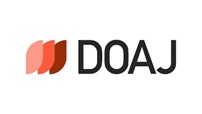Abstract
As advertising and promotions are categorized as operating expenses, managers tend to reduce marketing budget to improve their short term profitability. Gauging the value and accountability of marketing spending is therefore considered as a major research priority in marketing. To respond this call, recent studies have documented that financial market reacts positively to a firm`s marketing activity or marketing related outcomes such as brand equity and customer satisfaction. However, prior studies focus on the relation of marketing variable and financial market variables. This study suggests a channel about how marketing activity increases firm valuation. Specifically, we propose that a firm`s marketing activity increases the level of the firm`s product market information and thereby the dispersion in financial analysts` earnings forecasts decreases. With less uncertainty about the firm`s future prospect, the firm`s managers and shareholders have less information asymmetry, which reduces the firm`s cost of capital and thereby increases the valuation of the firm. To our knowledge, this is the first paper to examine how informational benefits can mediate the effect of marketing activity on firm value. To test whether marketing activity contributes to increase in firm value by mitigating information asymmetry, this study employs a longitudinal data which contains 12,824 firm-year observations with 2,337 distinct firms from 1981 to 2006. Firm value is measured by Tobin`s Q and one-year-ahead buy-and-hold abnormal return (BHAR). Following prior literature, dispersion in analysts` earnings forecasts is used as a proxy for the information gap between management and shareholders. For model specification, to identify mediating effect, the three-step regression approach is adopted. All models are estimated using Markov chain Monte Carlo (MCMC) methods to test the statistical significance of the mediating effect. The analysis shows that marketing intensity has a significant negative relationship with dispersion in analysts` earnings forecasts. After including the mediator variable about analyst dispersion, the effect of marketing intensity on firm value drops from 1.199 (p < .01) to 1.130 (p < .01) in Tobin`s Q model and the same effect drops from .192 (p < .01) to .188 (p < .01) in BHAR model. The results suggest that analysts` forecast dispersion partially accounts for the positive effect of marketing on firm valuation. Additionally, the same analysis was conducted with an alternative dependent variable (forecast accuracy) and a marketing metric (advertising intensity). The analysis supports the robustness of the main results. In sum, the results provide empirical evidence that marketing activity can increase shareholder value by mitigating problem of information asymmetry in the capital market. The findings have important implications for managers. First, managers should be cognizant of the role of marketing activity in providing information to the financial market as well as to the consumer market. Thus, managers should take into account investors` reaction when they design marketing communication messages for reducing the cost of capital. Second, this study shows a channel on how marketing creates shareholder value and highlights the accountability of marketing. In addition to the direct impact of marketing on firm value, an indirect channel by reducing information asymmetry should be considered. Potentially, marketing managers can justify their spending from the perspective of increasing long-term shareholder value.
Recommended Citation
Yun, Kyung Oh
(2013)
"Informative Role of Marketing Activity in Financial Market,"
Asia Marketing Journal: Vol. 15
:
Iss.
3
, Article 4.
Available at: https://doi.org/10.53728/2765-6500.1558
Creative Commons License

This work is licensed under a Creative Commons Attribution 4.0 License.





